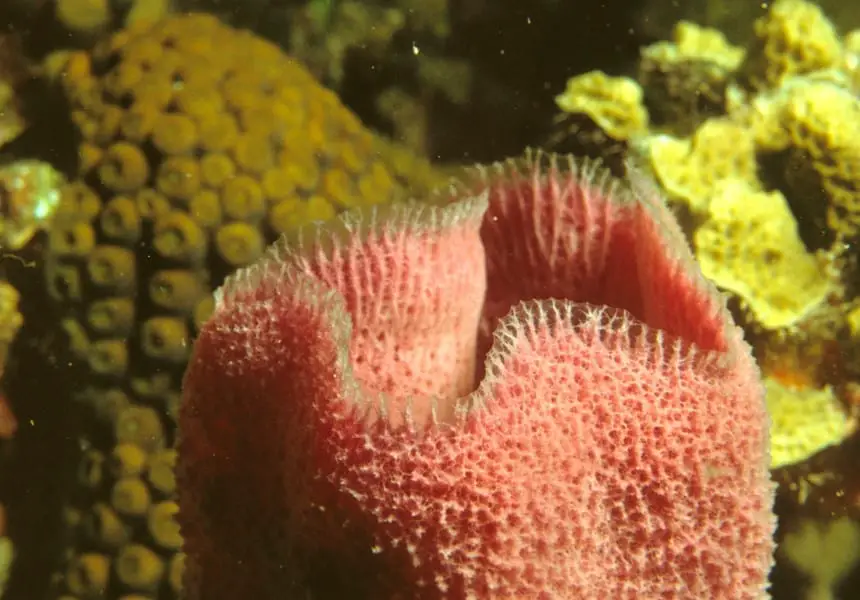As we all probably know, man is also considered an animal …we are animals, the frog is also an animal, but have you ever wondered why we are different from frogs?
Or can a man and a frog be similar? To make it more clear, both man and frog being animals belong to kingdom Animalia, but they are not exactly the same. In fact, all animals in the world are not the same.
To understand this better, the following article will talk about kingdom Animalia, what is it? Why are animals different? How are they different? And many more.
First, here’s a quick summary to get to grips with the concept, then we’ll head into a more detailed breakdown…
What Is Kingdom Animalia? Kingdom Animalia is the top-level category in which every animal in the world belongs. However, animals differ based on (not limited to) levels of organization, organ systems, and body symmetry. So animals are also classified into Kingdom, Phylum, Family, Genus, and Species for specific identification.
Animalia is just one kingdom of six kingdoms, although there are variations in the number of kingdoms, some will talk about 8, some 5, depending on which you consider being defunct or irrelevant – based on whose classification you’re working to and indeed even which country you’re in.
Despite it recently being divided into seven kingdoms, If we were to call it six, which is still commonly used in the USA and Canada, then the six kingdoms are as follows:-
- Archaebacteria (Ancient Bacteria)
- Eubacteria (True Bacteria)
- Protista
- Fungi
- Plantae
- Animalia
In a later article we will go into more depth regarding all the Kingdoms, however, let’s focus here on Kingdom Animalia
What is Kingdom Animalia?
Kingdom Animalia is one among the six kingdom scheme of classifications. It‘s the kingdom that consists of various multicellular eukaryotic animals.
All the animals in kingdom Animalia have a few important characteristics that are regular to every organism. But then the components within these characteristics differ from one animal to another. These differences are what makes Man different from a frog and so on.
The components that make animals differ from one another are symmetry, nature of coelom, the arrangement of cells, notochord, and patterns of circulatory, digestive and reproductive frameworks, segmentation and an arrangement of cells in germ layers.
Although it may be too complex to cover all aspects and show how animals differ in this one single article, below is a clearer breakdown of three important components of animals and how their characteristics differ from one another.
1. Levels of Organization
Every animal in kingdom Animalia is multicellular. But, they do not all display the same cell organization. To give a better understanding below is a further breakdown of the different cellular organizations found in animals.
- Cellular Level of Organization – This kind of cell organization is seen in animals like sponges. This is where cells are organized as free cell lumps.
- Tissue Level of Organization – This type of cell organization can be found in animals such as jellyfishes, corals, and sea anemones. This is where the cell organization shows the division of exercises among themselves. Under this specific cell organization, cells carrying the same capacity are organized as tissues.
- Organ Level of Organization – Examples of this cell organization include flatworms. This is the cell organization where tissues carrying out similar capacity are used to shape organs. In this way, every organ will be specific for a particular capacity.
- Organ Framework Level of Organization – Examples of animals with this cell organization include snails, slugs and earthworms. This is the cell organization of certain animals where organs that are related are used to shape functional frameworks. Every organ framework will be related to a particular physiological capacity.
Heres a short video explaining further about animal classification…
2. Patterns of Organ Systems
This component focuses on the organ frameworks of animals and how they differ. Different animal groups display different examples of complexities in their patterns of organ systems, especially in their digestive and circulatory systems.
Digestive System
All the animals in the world have two forms of digestive systems…
- Incomplete Digestive Framework – this is the digestive system which has only one opening to the outside of the body. This means that this solitary opening will serve as both the mouth and rear-end (opening and exit).
This way the digestive system is incomplete. Examples of animals with such a digestive framework includes jellyfishes and sponges.
- Complete Digestive Framework – Opposite to the incomplete digestive framework, this digestive framework as the word says is complete with two different openings to the outside of the body. Examples of animals with this digestive framework include humans, dogs, cats, etc.
Circulatory System
All the animals in the world have two forms of circulatory system such as,
- Open Type – An open circulatory system as the word says is where all the cells and the tissues come into direct contact with blood.
This means in an open circulatory framework, the blood is pumped out of the heart in a way where all the cells and the tissues are straightforwardly washed in it. So this way the circulatory system is open. Examples of animals with an open circulatory system include prawns, spiders, and insects.
- Closed Type – This is a circulatory system where the blood circulation is done through a progression of vessels which are of different sizes and diameters. Such progression ways include veins, arteries, and capillaries.
This means that in a closed circulatory system, the blood does not flow freely. Examples of animals with a closed circulatory system includes humans and all other vertebral animals.
Body Symmetry
Animals also differ based on the symmetry of their bodies. The symmetry of an animal is decided based on the course of action of body parts around a mainline or focal point.
- Asymmetrical – These are animals that cannot be portioned or divided into two equivalent parts when cutting through their focal or mainline points. Usually, asymmetrical animals have no symmetry or pattern. Examples of asymmetrical animals include sponges.

- Radial Symmetry – These are animals where, when cut through their focal point, the body can be portioned into two parts that are similar to one another (indistinguishable).
This is more like cutting a pie, which will give parts that are equal in appearance. Examples of radially symmetrical animals include starfish, sea anemones and sea cucumbers.

- Bilateral Symmetry – This is where animals when cutting through the focal point can be divided into two equal parts of left and right that look the same. Examples of bilaterally symmetrical animals include Humans, dogs, cats, e.t.c.
Here’s a video explaining further…
System of Classification of animals

There’s a specific framework that famous researchers use to classify every living thing, including animals.
This common framework classifies organisms into seven groups or taxons.
This classification can be as follows, starting from the most comprehensive and complex one to the most particular classification.
There are lots of super-classes, tribes, and sub-classes which also form part of the taxonomic list, but below we’ll explain the most widely used rankings
- Kingdom – This is the most comprehensive and astounding division, where all the animals in the world belong
- Phylum – Each kingdom is then divided into smaller subdivisions called, “Phyla”. To take it with an example, Chordates are a phylum.
- Class – The phyla are further subdivided into classes, taking the same example, chordates can be divided into classes as Mammalia, Birds, Reptilia, and Amphibians.
- Order – A further subdivision is then added which is called Order, a Taxonomist will decide what falls within this category. Each order is then split further into families. Examples would be the cat “family” as one order, or the rodent “family” as another.
- Family – The order of an animal can then be even further subdivided into families. Families are those that contain more than one genus. For example, Anatidae is the biological family of water birds that includes ducks, geese, and swans.
- Genus – Families are then further divided into genera. This means that animals with the same genus are fundamentally the same. For example, Panthera is a genus within the family Felidae.
Learn more about the Difference Between Species and Genus
- Species – Species is the most specific classification, which contains only one kind of animal. The best example is “us” who are the only extant human species.
Learn the Difference Between Variety and Species
Here’s a short video explaining the classification of animals…
Learning resources
We’ve found the ideal resources to continue your learning at home and at school on amazon. Help support our efforts for wildlife causes and keep this site working for nature. Amazon also donates to Wild-life related charities!
Classification of Animals Cards
A set collecting card game based on the classification of animals, which includes 36 large-sized playing cards. The cards are divided into nine sets of four cards. Playing is simple, the player with the most sets wins. For 3-6 Players of ages 8+
Classification of Animals – Science Poster
EDUCATIONAL CHART DESIGNED BY TEACHERS: This Classification of Animals poster helps students to learn, engage and remember more information. Covering the basics of how animals are classified, this unique school poster can play a vital role in improving both students’ understanding and classroom décor.
Video resources
Here’s a short helpful video explaining the 5 kingdoms a little further…
So finally…
We hope this has been useful in understanding more about how the kingdoms are laid out, and how the Kingdom Animalia fits into this schematic.
A schema that’s been developed over many decades if not centuries by esteemed scientists. Despite its variations, I think we can agree it works quite well!
This content has been checked and verified by a qualified veterinary practitioner. The article has been reviewed by our editorial board and has been approved for publication in accordance with our editorial policy.

